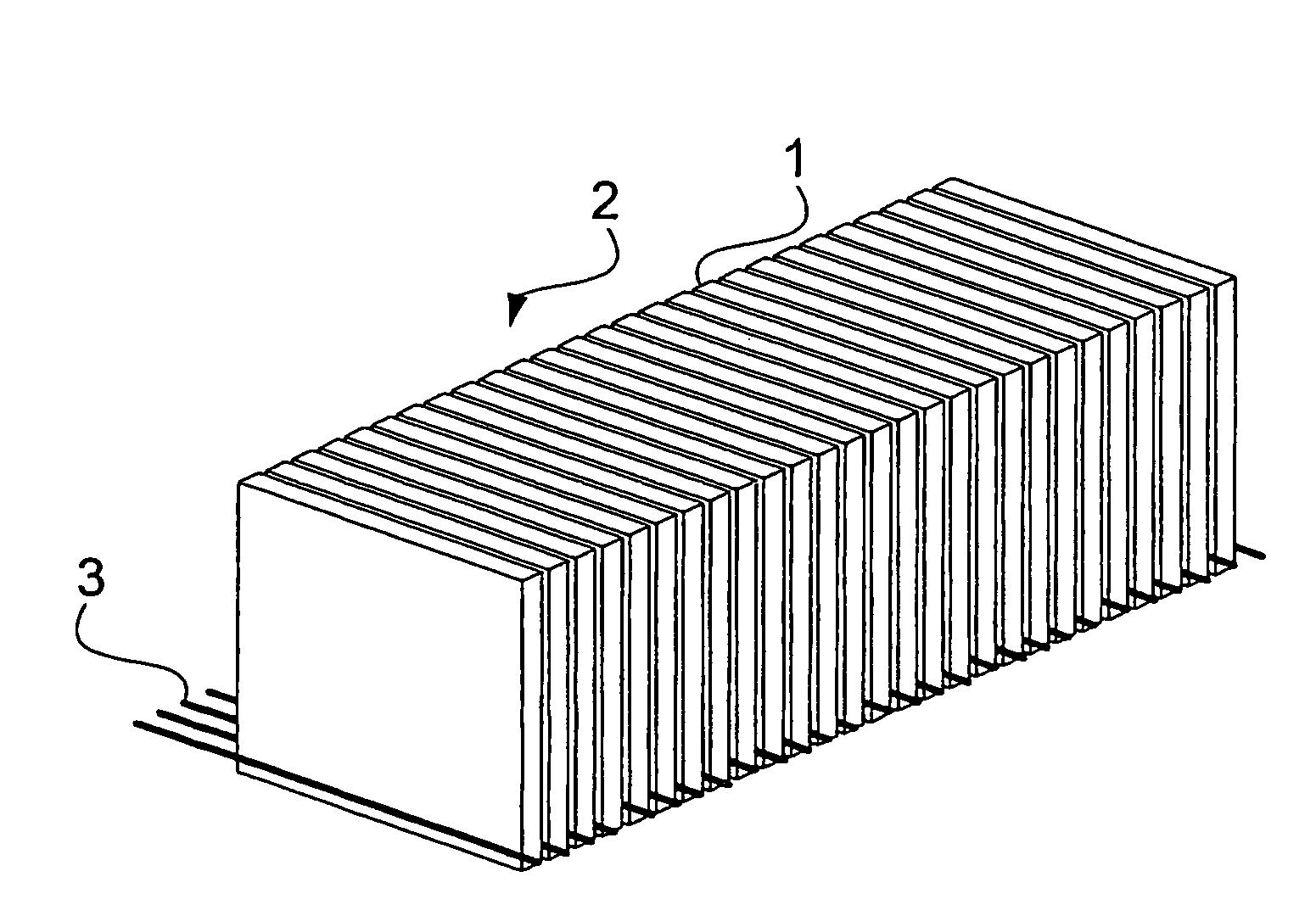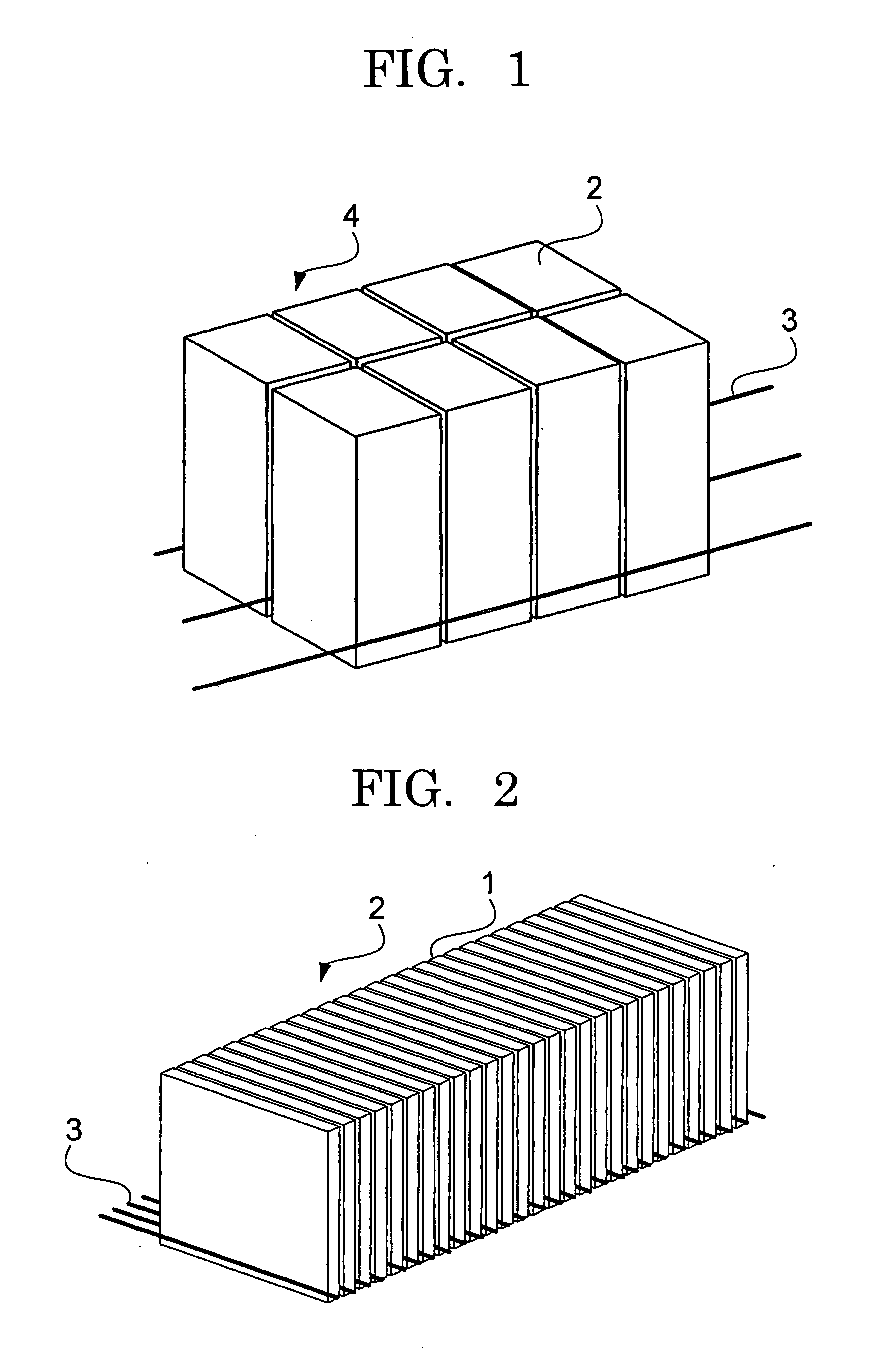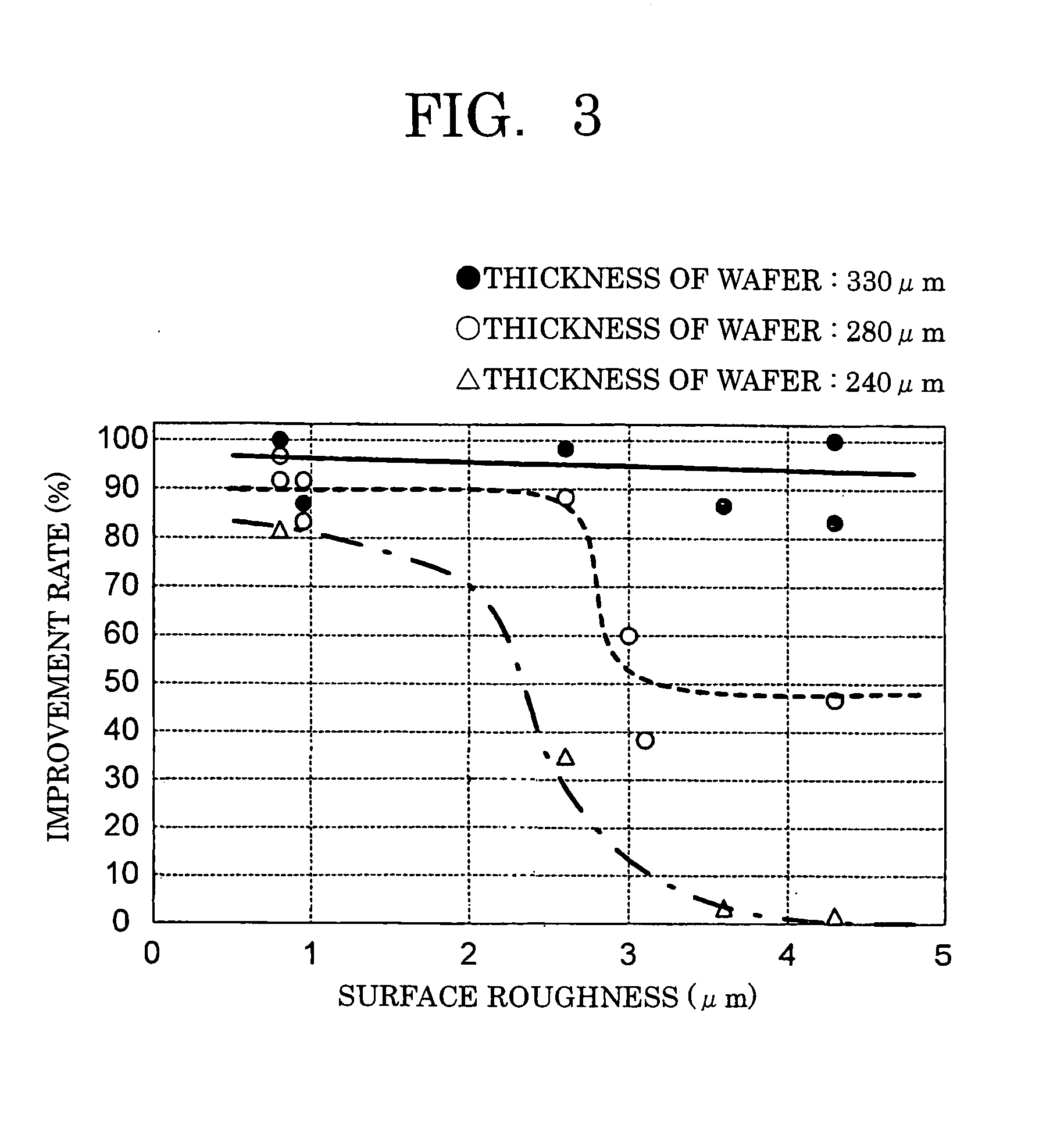Method of Producing Silicon Blocks and Silicon Wafers
- Summary
- Abstract
- Description
- Claims
- Application Information
AI Technical Summary
Benefits of technology
Problems solved by technology
Method used
Image
Examples
Embodiment Construction
[0015]FIG. 1 is a view that shows the way in which a silicon ingot is cut to silicon blocks in the present invention, and FIG. 2 is a view that shows the way in which a silicon block is sliced to silicon wafers in the present invention.
[0016]The present invention relates to the characteristic of a semiconductor block associated with the production of polysilicon semiconductor wafers used in producing a solar battery. Although silicon is generally widely adopted as such semiconductor, the present invention can also be applied to gallium arsenide alloys, germanium, silicon carbide alloys and the like.
[0017]In the following explanation, description will be made by taking polysilicon as an example.
[0018]As shown in FIG. 1, polysilicon blocks 2 are produced by cutting a polysilicon ingot 4 while supplying a silicon ingot cutting slurry to cutting equipment, and the polysilicon blocks 2 are produced by cutting the polysilicon ingot 4 in such a manner that they have a desired cross-section...
PUM
| Property | Measurement | Unit |
|---|---|---|
| Percent by mass | aaaaa | aaaaa |
| Fraction | aaaaa | aaaaa |
| Acidity | aaaaa | aaaaa |
Abstract
Description
Claims
Application Information
 Login to View More
Login to View More - R&D
- Intellectual Property
- Life Sciences
- Materials
- Tech Scout
- Unparalleled Data Quality
- Higher Quality Content
- 60% Fewer Hallucinations
Browse by: Latest US Patents, China's latest patents, Technical Efficacy Thesaurus, Application Domain, Technology Topic, Popular Technical Reports.
© 2025 PatSnap. All rights reserved.Legal|Privacy policy|Modern Slavery Act Transparency Statement|Sitemap|About US| Contact US: help@patsnap.com



